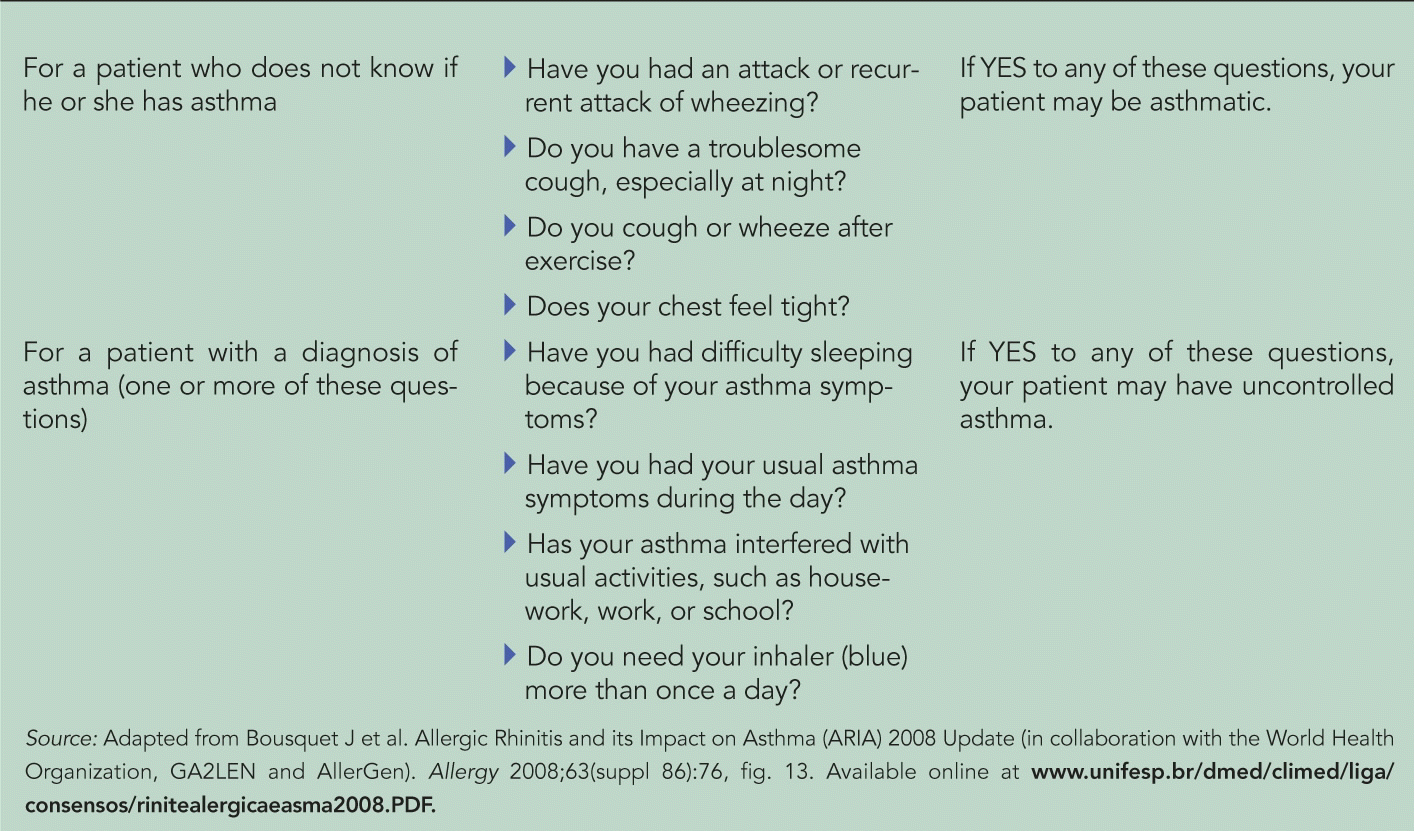Diagnosing Asthma
Any otolaryngologist caring for patients in a general or rhinologic practice, whether or not they choose to treat allergies or asthma, should know the basic diagnostic testing and at least first-line therapy for these conditions, said John A. Fornadley, MD, an otolaryngologist with Associated Otolaryngologists of PA in Hershey, PA.
Explore This Issue
April 2009As with other medical conditions, diagnosis of asthma begins with recognition of its signs and symptoms. Along with wheezing, shortness of breath with exertion, and improvement with inhalers, additional indicators of asthma may be found by asking patients what they do not do, said Dr. Fornadley. Patients with mild to moderate untreated asthma may avoid wheezing attacks by withdrawing from activities such as skiing or biking that can bring on symptoms, he said, adding that patients without a diagnosis of asthma may have used inhalers to get through gym class or a game of tennis.
Another important symptom is a cough, which, according to Dr. Pillsbury, may be a subtle sign but is almost always universally present in asthma. In the past, otolaryngologists would not look for asthma in patients with allergies who presented with a cough, he said. We’d wait for the diagnosis to hit us in the face.
For a simple guide to initially assess patients with allergies who may also have asthma, the updated ARIA guidelines suggest asking patients a number of targeted questions (Table 2).

To confirm a diagnosis of asthma, a pulmonary function test or pulmonary spirometry should be done. As mentioned earlier, the increased availability and accessibility of these tests that now can be done as in-office procedures have made it easier to diagnose asthma. Although these tests are considered the chief diagnostic tool for objectively assessing the presence and severity of asthma, opinion is divided on their use within otolaryngologic practice. Some will say that any patients with allergic rhinitis and symptoms suggestive of asthma should have a pulmonary spirometry, said Dr. Haydon, adding that he thinks this test should be used more often than not.
Part of the utility of these tests, for Dr. Pillsbury, is to help with a differential diagnosis. When you see people with abnormal pulmonary function tests and you treat them with a bronchial dialator and they get better, that tells you that asthma is likely a component of their problem.
Leave a Reply